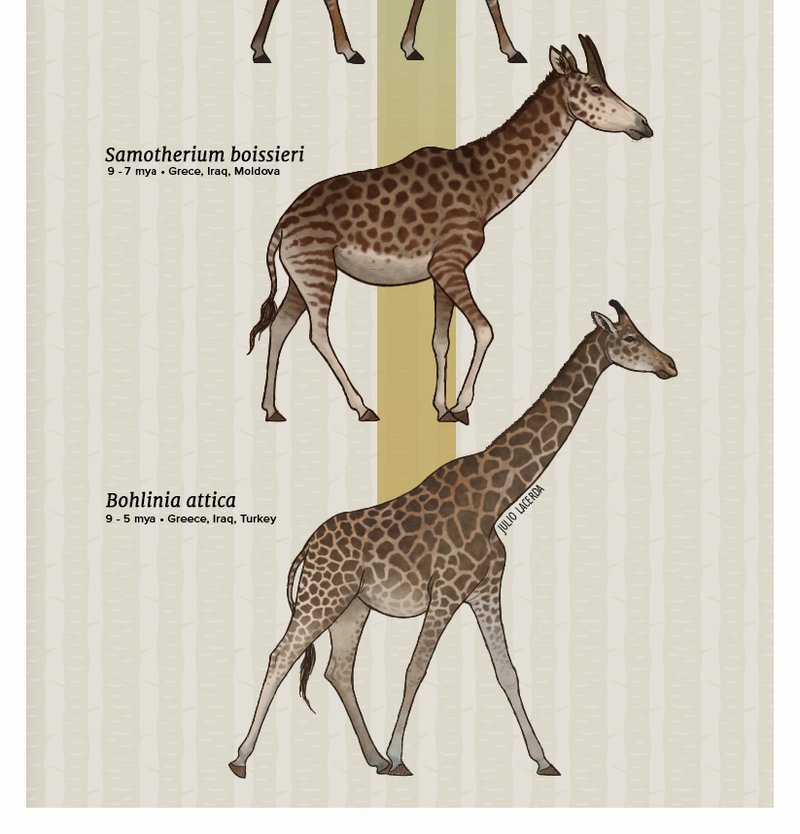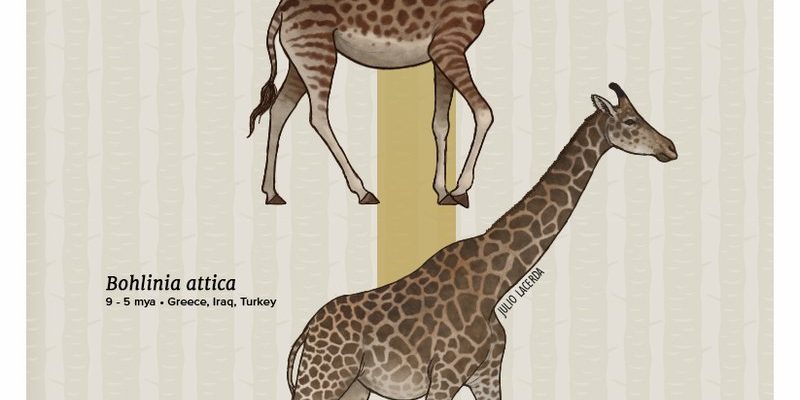
When we talk about the evolution of giraffes, we’re diving into a remarkable journey that mirrors the shifting landscapes of Africa. It’s a bit like watching a slow-motion video of how one species can adapt to its surroundings while facing challenges along the way. So, let’s take a closer look at how these incredible animals came to be the majestic creatures we see today.
A Brief Overview of Giraffe Evolution
Giraffes belong to the family Giraffidae, which includes their closest relatives, the okapi. This family tree gives us a glimpse into how giraffes and okapis share a common ancestor, dating back millions of years. The first known giraffe-like animals roamed the Earth around 25 million years ago in regions that are now part of Africa. These ancestors were quite different from the giraffes we know today, but they laid the groundwork for their evolution.
As time went on, the climate in Africa started to shift. The lush forests where these early giraffes lived began to turn into more open habitats. This change in environment prompted some fascinating adaptations. For instance, some giraffe ancestors developed longer necks to help them reach higher leaves on trees. This change was essential as they competed with other herbivores for food. Imagine standing on tiptoes to reach that last cookie on the top shelf—giraffes did something similar, but with trees!
Adaptations: The Long Neck Dilemma
When you think about why giraffes have those long necks, it raises some intriguing questions. Why did their necks get so long? One popular theory is the “necks-for-mating” hypothesis, which suggests that males with longer necks had a better chance of attracting mates. In the animal kingdom, competition for mates can lead to surprising adaptations, and this is one of those cases. Picture a dance-off where the winner gets to mate; in the giraffe world, the longer the neck, the better the chance of winning!
On the flip side, long necks also give giraffes an advantage when it comes to feeding. Most other herbivores can’t reach the higher foliage that giraffes can, allowing them to thrive even when food is scarce. This dual purpose of their necks—attracting mates and accessing food—shows the complex interplay of natural selection. Here’s the thing: evolution isn’t just about one feature; it’s about how several traits work together to help a species survive.
Lifestyle and Social Structure of Giraffes
Giraffes typically live in loose herds, which is quite different from many other large mammals. You might be wondering why this social structure matters. The herd offers safety in numbers, making it harder for predators like lions to target individuals. Giraffes communicate with each other using a range of sounds, from grunts to snorts. While they may seem aloof, they do form bonds with other members of their group.
Interestingly, giraffes also have a unique way of keeping an eye out for danger. Their height allows them to spot predators from afar, giving them a significant advantage. Imagine having a lookout tower as your home; that’s how a giraffe navigates the plains! Their keen eyesight helps them stay alert, while their long legs allow them to run surprisingly fast when they need to escape from threats.
The Role of Giraffes in Their Ecosystem
In the grand scheme of things, giraffes play a crucial role in their ecosystem. As browsers, they help maintain the balance of plant life by feeding on younger leaves and branches. This feeding behavior can actually promote the growth of plants, as it encourages new shoots to grow. Without giraffes, some tree species might struggle to thrive.
Moreover, giraffes are often referred to as “keystone species.” That means their presence has a disproportionately large effect on their environment compared to their population size. Just imagine the ripple effects if you remove a piece from a Jenga tower; everything could potentially fall apart. In this case, without giraffes, the structure of the ecosystem could become unbalanced, leading to a decline in biodiversity.
The Threats Facing Giraffes Today
Despite their adaptability and importance in the ecosystem, giraffes are facing significant threats today. Habitat loss due to human expansion, poaching, and climate change are all impacting their populations. It’s alarming to know that the giraffe population has decreased by about 40% in the last few decades.
You might be thinking, “What can we do about it?” Well, even small actions can make a big difference. Supporting conservation efforts, educating others about giraffe ecology, and even adopting a giraffe through wildlife organizations can contribute to their preservation. Remember, every effort counts in keeping these incredible creatures around for future generations.
The Future of Giraffes: Conservation Efforts
Conservationists are working hard to protect giraffes and their habitats. Various programs focus on anti-poaching measures, habitat restoration, and community education. Working with local communities is crucial because people living near giraffes play a significant role in their survival.
Many organizations utilize technology like GPS tracking to monitor movements and behaviors, helping to understand how to protect these animals better. Imagine having a personal assistant that helps you navigate life. That’s what technology does for conservationists—offering insights into giraffe populations so they can react quickly if needed.
The evolutionary history of giraffes is more than just a tale of physical adaptations; it’s about survival, balance, and the intricate web of life. From their towering necks to their important role in the ecosystem, giraffes encapsulate the beauty of evolution and adaptation. They remind us of the care we must take to protect not only their species but the delicate environments they inhabit.
So, the next time you see a giraffe, take a moment to appreciate the centuries of evolution that shaped it. And remember, the giraffe story is still being written—let’s make sure it has a happy ending.

